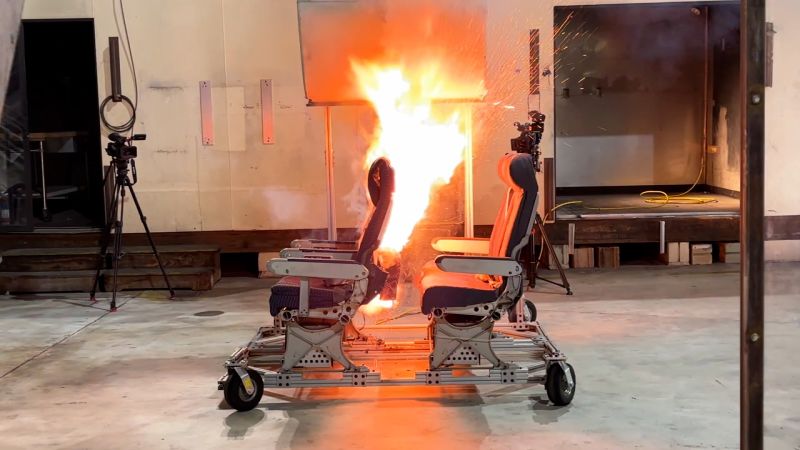Almost every passenger carries lithium-ion batteries onto airplanes – in their phones, laptops, rechargeable powerpacks and even vapes. And when something goes wrong with one of them, Federal Aviation Administration tests show the results can be catastrophic.
Delta Air Lines Flight 1334 was flying from Atlanta to Fort Lauderdale last month when smoke and flames started pouring out of a backpack. The pilots declared an emergency and diverted to Fort Meyers where the 191 people onboard safely evacuated.
The culprit was a passenger’s personal lithium-ion battery pack, which had been tucked away in the carry-on bag.
At the FAA’s William J. Hughes Technical Center for Advanced Aerospace in Atlantic City, New Jersey, fire safety engineers research and demonstrate just how bad it can be.
“Lithium batteries can go into what’s called thermal runaway,” Fire Safety Branch Manager Robert Ochs, explained. “All of a sudden, it’ll start to short circuit … It will get warmer and warmer and warmer until the structure of the battery itself fails. At that point, it can eject molten electrolyte and flames and smoke and toxic gas.”
Continue reading the complete article on the original source



